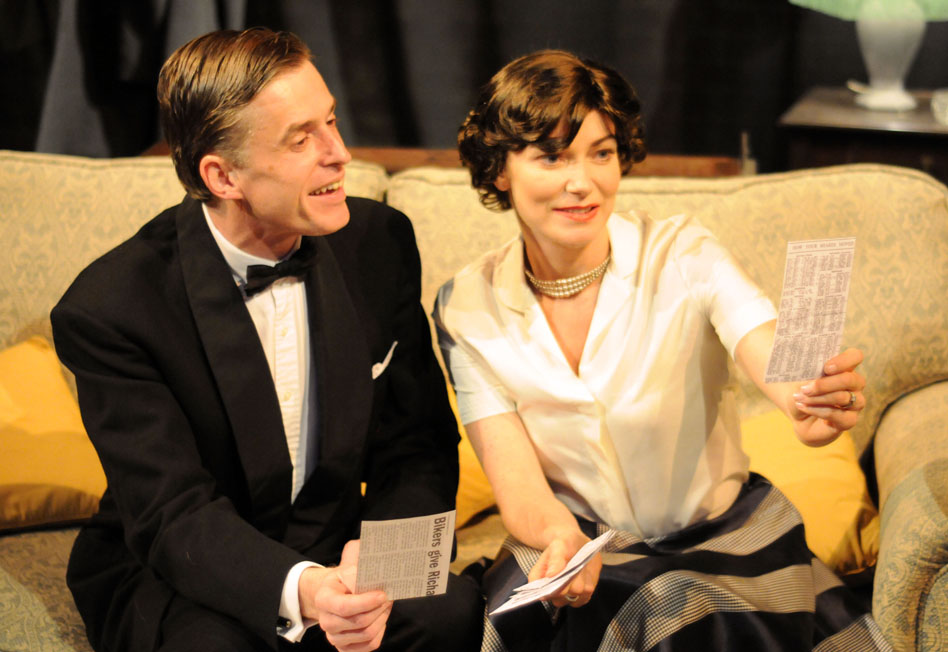
If one was being charitable, one would call Frederick Knott’s whodunnit, Dial M for Murder, a classic. If one was being less than charitable one would call it a potboiler. The play has been around since 1952 and was standard fodder – sorry, fare – for rep theatres over the following three decades, as well as being made into a famous film by master of the genre, Alfred Hitchcock. It compares well to the majority of Agatha Christie plays, having a strong and complex plot line and only five characters on whom to concentrate.
The problem with these plays is that they are irrevocably stuck in the time warp of post-war, middle-class England and cannot be updated – there are too many references to long-outdated ideas and conventions. For example, in this play, someone is questioned at length about where he got £50 in cash from and land-line telephones are an integral part of the plot – the title is the giveaway. Nevertheless, and because of all those reasons, these plays give an opportunity for a creative director and a talented designer to come up with a very attractive and acceptable production. They need to commit themselves wholeheartedly and pull out all the stops. There have been some companies in recent years that have toured imaginative, exceptionally stylish and expensive looking productions which have provided a very satisfying night out. In fact, we gave another production of this play five stars a year or two ago.
This production by Talking Scarlet, except for a very smart logo, pulled out very few stops and we saw the play exactly as it used to be done in the good old days of rep with a very basic, under-dressed cheap set, which occasionally wobbled, and a door bell that didn’t work or, at least one that I couldn’t hear sitting in row E. This led to the puzzling, almost comical, oft repeated situation of the characters rushing to the door for no apparent reason and opening it to find someone standing there – except when the murderer tries to make his escape at the end and his exit through the door is blocked by an invisible policeman.
That said, Dial M for Murder has a respectable enough plot with enough twists and turns to at least keep you awake, though not perhaps on the edge of you seat. The five actors all gave it a good shot – Oliver Mellor was the broke ex-tennis player (the sport was entirely amateur in those days), rotter of a husband with a very modern hairstyle and Terri Dwyer was believable as his mink-clad, Maida Vale two-timing wife. Her former squeeze-on-the-side, played by Marcus Hutton, seemed a decent sort of chap in spite of that. I liked Jolyon Young as the husband’s old school chum who was convincing as an even bigger rotter and John Hester brought up the rear with his lugubrious detective inspector in the days when policemen didn’t look as though they were getting younger.
Worth seeing if you like complex, multi-layered murder mysteries but not perhaps if you are a connoisseur of fine theatre which, to be fair, this does not purport to be. ★★★☆☆ Michael Hasted 8th March 2016

